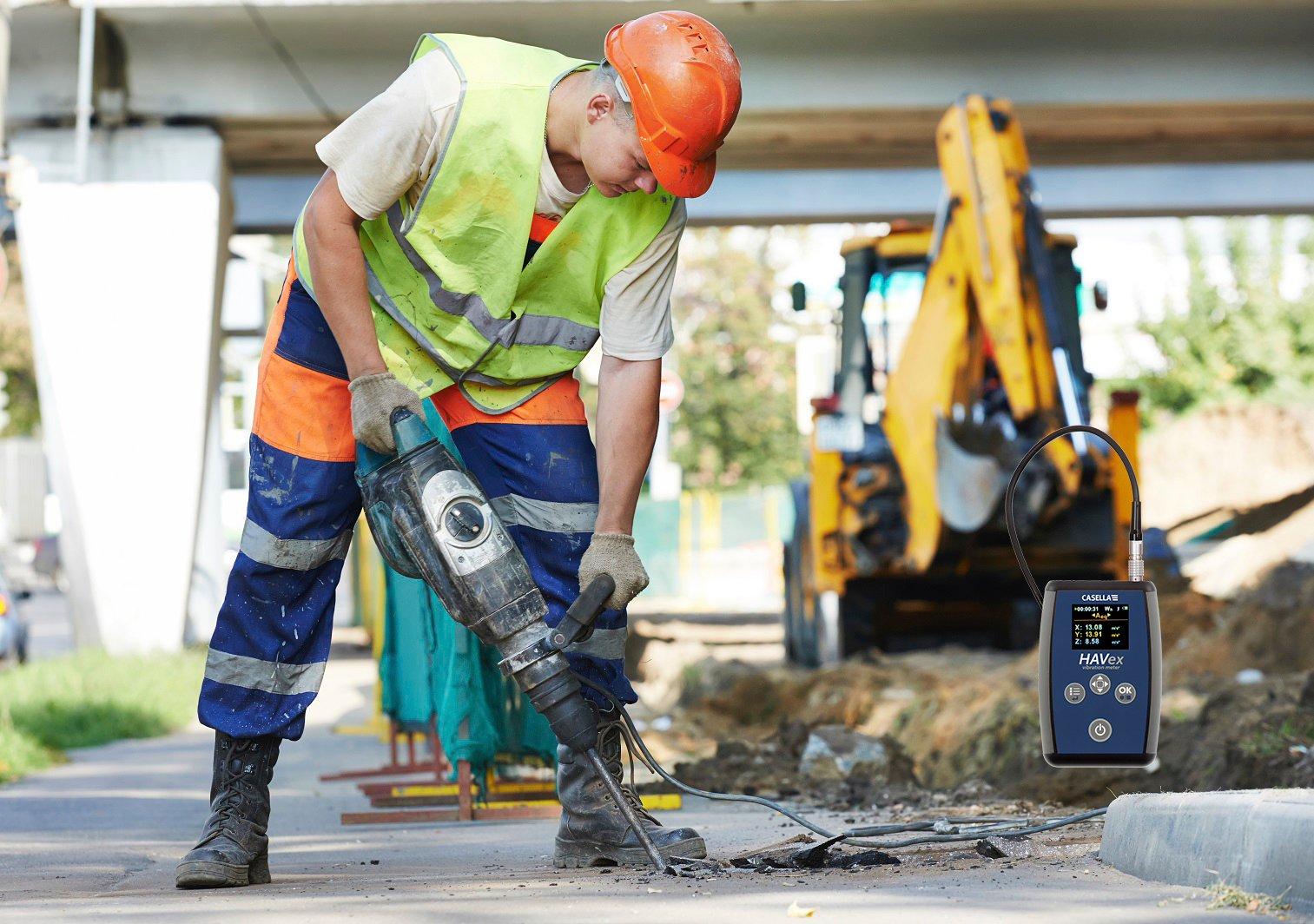Casella UK
Wolseley Rd, Kempston,Bedford MK42 7JY
+44(0)1234844100
info@casellasolutions.com

Hand-arm vibration exposure can directly cause a range of conditions collectively known as hand-arm vibration syndrome (HAVS), or be a causal factor in specific cumulative trauma disorders such as carpal tunnel syndrome. Identifying signs and symptoms at an early stage is important. It will allow the employer to take action to prevent health effects from becoming serious and permanent injuries for at risk employees. The new HAVex Hand-arm Vibration Monitor is ideal for measuring vibration exposure from a wide variety of sources.
Hand Arm Vibration syndrome is caused when excessive levels of vibration is transmitted from work tools or processes into workers’ hands and arms. It can be caused by operating handheld power tools, such as grinders, saws, drills etc., and other handheld equipment, such as lawnmowers, or even by holding workpieces being processed by machines such as pedestal grinders. Regular and frequent exposure to hand arm vibration can lead to permanent health effects in as little as five years’ time even at levels at or near the allowable exposure limit. Many regulations, exposure guidelines and measurement standards define allowable exposure limits including the ANSI S2.70 and ISO 5349 standards, EU Directive on Vibration Exposure and the ACGIH TLV.
becoming red and painful on recovery (particularly in cold and wet environments, and usually in the fingertips first)
For some people, symptoms may appear after only a few months of exposure, but for others they may take years. Even at the recommended exposure limit, up to 10% of the workforce may exhibit symptoms of HAVS in as little as 6 years of continuous exposure. Symptoms worsen with continued exposure to vibration and may become permanent and irreversible.
These effects can severely limit the jobs an affected person is able to do, as well as many family and social activities. Jobs requiring regular and frequent use of vibrating tools and equipment and handling of vibrating materials are found in a wide range of industries, for example:
There are many different types of handheld power tools and equipment which can cause deleterious health effects from excessive vibration. Some of the more common ones are: